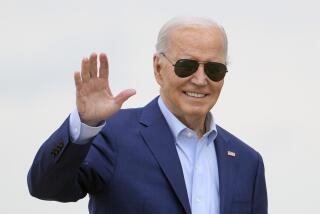Feud between Cedars-Sinai and surgeon puts focus on patient safety
After doctors in Florida failed to remove his deep-seated brain tumor, Marc Kotolnick traveled to Los Angeles to see Dr. Hrayr Shahinian, a surgeon at Cedars-Sinai Medical Center and a star in the emerging field of minimally invasive brain surgery.
Shahinian cut through Kotolnick’s eyebrow, drilled a hole into his skull and laced an endoscope into his brain. But when a delicate pair of forceps failed, the surgeon aborted the operation. There was no functioning spare set on hand.
The May 2005 incident resulted in a lawsuit, which Cedars-Sinai resolved in a confidential settlement.
The case, however, was part of a wider problem: A long-running conflict between hospital administrators and Shahinian culminated in its own lawsuit after he stopped working there in late 2005. An arbitrator in that case ruled last November that the hospital had forced him out by improperly restricting his ability to perform surgeries.
The arbitrator, Linda Klibanow, ordered the hospital to pay Shahinian $4.7 million, including $2.6 million in punitive damages meant to deter the hospital from retaliating against doctors who voice concerns about patient safety. (Both sides had agreed to binding arbitration.)
The fight isn’t over. In legal filings late last month, Cedars-Sinai indicated it will challenge the decision in the state Court of Appeal. A lawyer for the hospital, Raymond Thomas, said patient safety was never compromised.
The arbitrator disagreed. In her 130-page decision, she wrote that despite pleas from the doctor and operating room staff for more surgical tools, Cedars-Sinai for years “displayed a disregard for health and safety of patients by not providing adequate redundancy of instruments for Shahinian’s surgeries.”
In response to Cedars-Sinai’s argument that the problems with Shahinian were unique, Klibanow cited two other high-profile safety problems at the prestigious hospital: In November 2007, the newborn twins of actor Dennis Quaid, as well as another child, were given 1,000 times the intended dosage of a blood thinner. And last fall, state and federal authorities launched an investigation into radiation overdoses from CT brain perfusion scans. Over an 18-month period, 260 patients received up to eight times the normal radiation because the hospital staff had misunderstood a default setting on the machine, according to Cedars-Sinai officials.
In an interview, Shahinian said that in the five years before he left Cedars-Sinai, more than 100 surgeries were affected. Most were cancellations or delays that occurred after instrument problems were discovered but before the operations began. But he estimated that more than a dozen times he was forced to turn back after patients had already been anesthetized.
“Cedars, as cowards tend to do sometimes, decided at some point this guy we recruited is either too much trouble or it doesn’t make sense to support him,” he said.
Shahinian, 50, said the shortages grew worse as his relationship with the hospital deteriorated. He said the problem was exacerbated by inadequate sterilization that occasionally left bits of brain matter on the instruments -- a claim supported by the arbitrator’s findings but denied by the hospital.
Still, Shahinian continued to perform about 150 surgeries a year. He said he felt obligated to treat patients who he said came to him from around the country.
He had hospital privileges only at Cedars-Sinai, he said, because the tight community of neurosurgeons had “blackballed” him.
“On one hand, I had to worry about my livelihood,” he said. “On the other hand, I had to worry about the safety of my patients. I never put my livelihood ahead of the safety of my patients.”
Thomas, the lawyer for Cedars-Sinai, suggested that Shahinian was invoking the issue of patient safety in pursuit of his business interests. “I think of this as a business dispute, not a patient-care dispute,” Thomas said.
Sometimes delays in surgeries “just happen,” he said, adding that Shahinian “seems to be more sensitive to it.”
In an e-mail, Cedars-Sinai spokesman Richard Elbaum said the hospital’s sterilization techniques for surgical instruments “have been, and continue to be, thoroughly reviewed, inspected and validated by every relevant regulatory agency and accrediting organization, all of which have found that we adhere to the highest standards of quality.”
Hospital administrators lured Shahinian from New York to Los Angeles in 1996 by creating a new department for him to lead, the division of skull base surgery. But the relationship between Shahinian and his new bosses and colleagues soured within months, according to interviews and court records.
Though board-certified in general surgery, he was not board-certified as a neurosurgeon, a fact that he said spurred ego clashes and turf battles.
Shahinian left the hospital faculty in 2003 when the hospital offered him a contract he could not accept, he said. He lost his research, teaching and administrative duties but retained his privileges to perform surgeries.
In late 2005 and early 2006, the hospital imposed a series of conditions on Shahinian: He must supply and maintain custom instruments himself; provide his own employee to clean the instruments or sign off on the hospital’s sterilization procedures; inspect and approve each instrument before a patient was placed under anesthesia; and refrain from using the type of customized tool that had failed in the Kotolnick case.
The arbitrator said these conditions were unreasonable and amounted to a “deceitful stratagem” to remove Shahinian without offering him the established protections of physician peer review. She suggested that Shahinian had been targeted because of possible concerns about his competence, his long history of raising safety concerns or his dysfunctional relationship with hospital administrators.
Countered Thomas: “Everything we asked him to do was calculated to ensure that patient safety was protected.” The arbitrator “is acting like we didn’t do anything” about Shahinian’s complaints, he said. “And when we clearly do something, she hits us with a $4.7-million award. Where’s the justice in that?”
Before he left Cedars-Sinai, Shahinian invested $600,000 in Century City Doctors Hospital with plans to practice there. But the deal fell apart in 2006 when the hospital denied him privileges. His suit to recoup his investment is pending.
He now performs surgeries at Thousand Oaks Surgical Hospital.
Kotolnick, the patient whose surgery was stopped in 2005, still lives in Florida with a slow-growing brain tumor that is considered benign but that must be monitored because of its potential to apply pressure to the brain, disrupt the pituitary gland and damage the eye.
His lawyer, Kevin Meenan, said that scar tissue from the aborted attempt at Cedars-Sinai and two previous surgeries rendered it too dangerous to try removing the tumor again.
More to Read
Start your day right
Sign up for Essential California for news, features and recommendations from the L.A. Times and beyond in your inbox six days a week.
You may occasionally receive promotional content from the Los Angeles Times.







